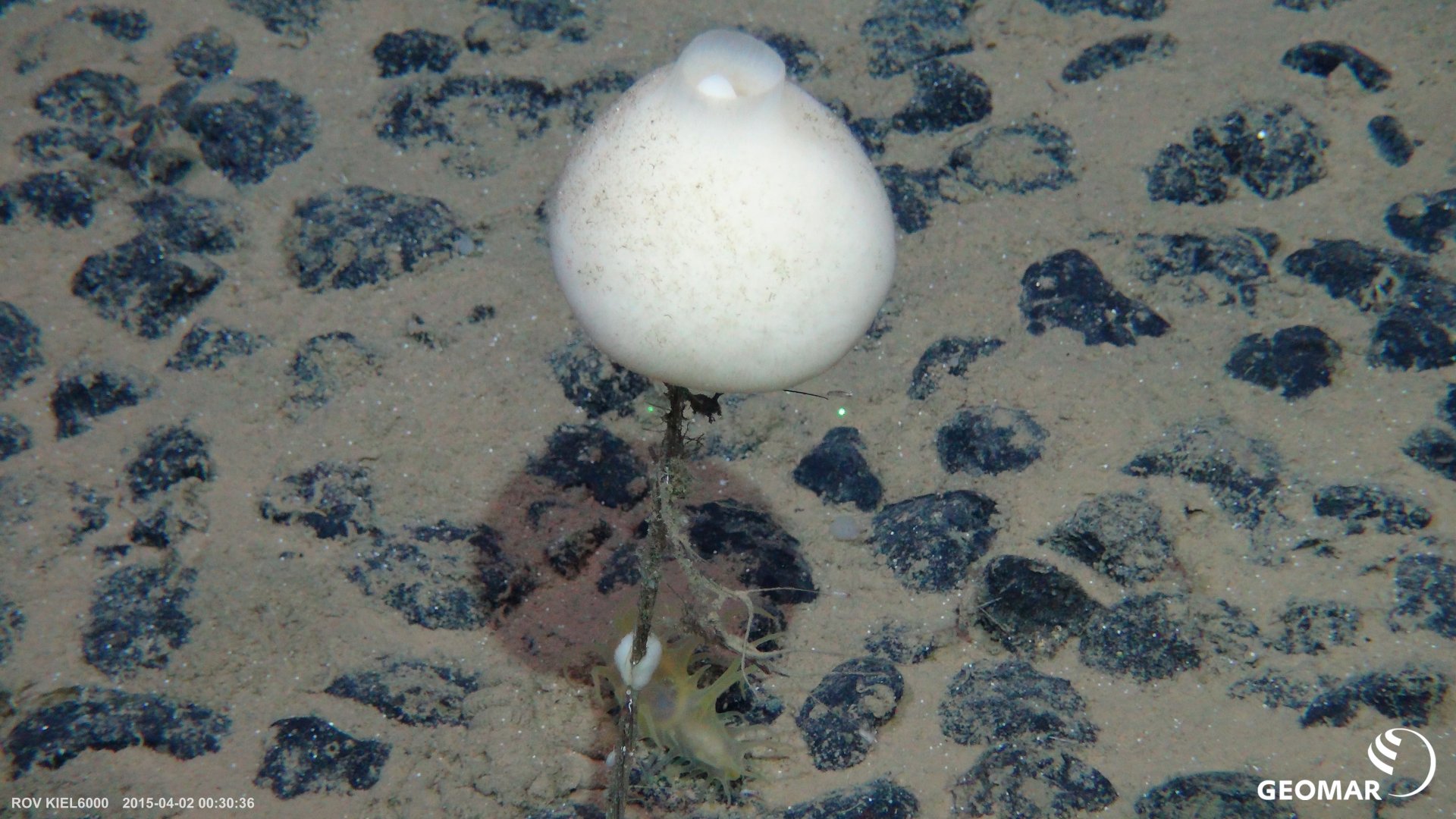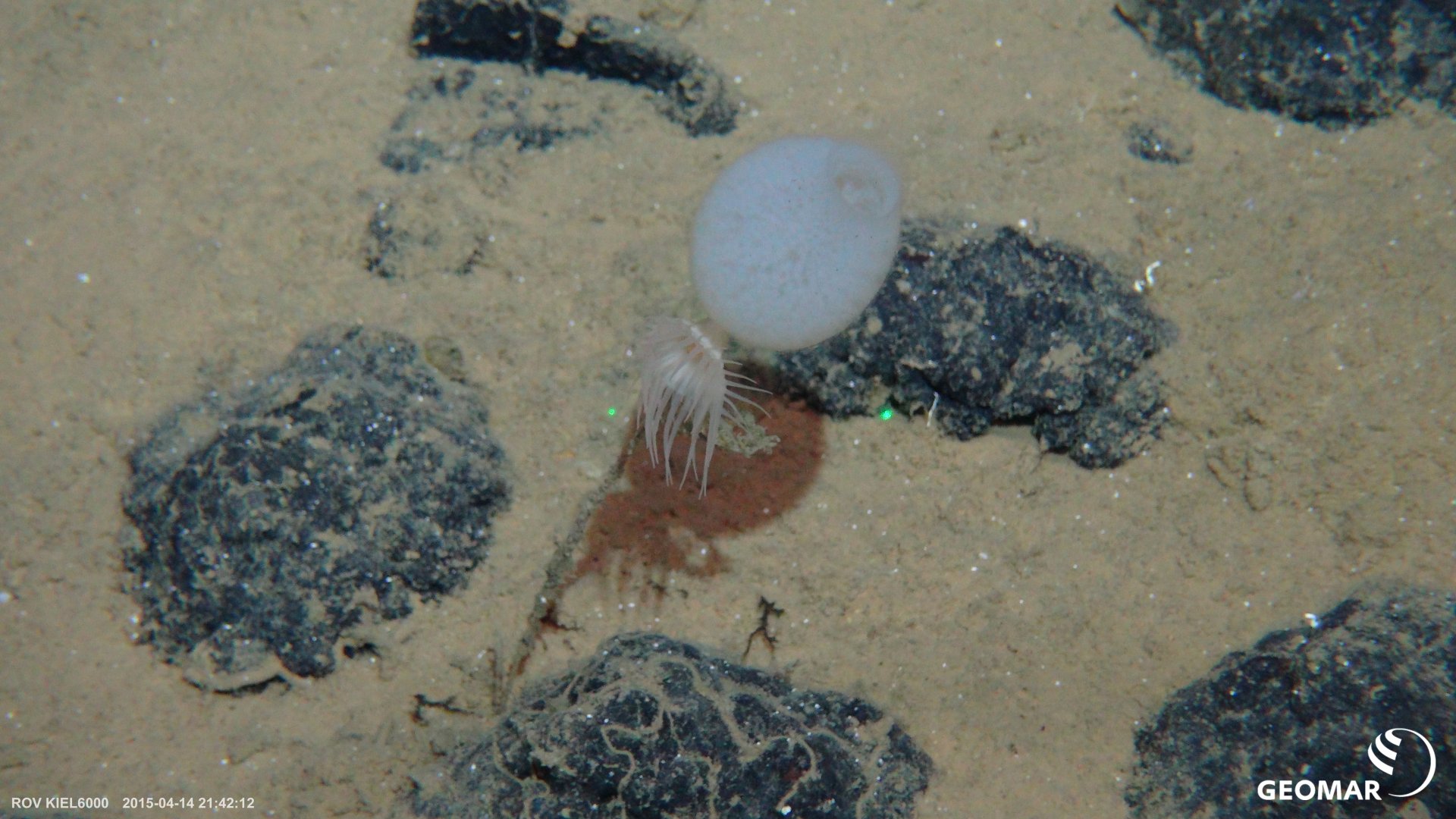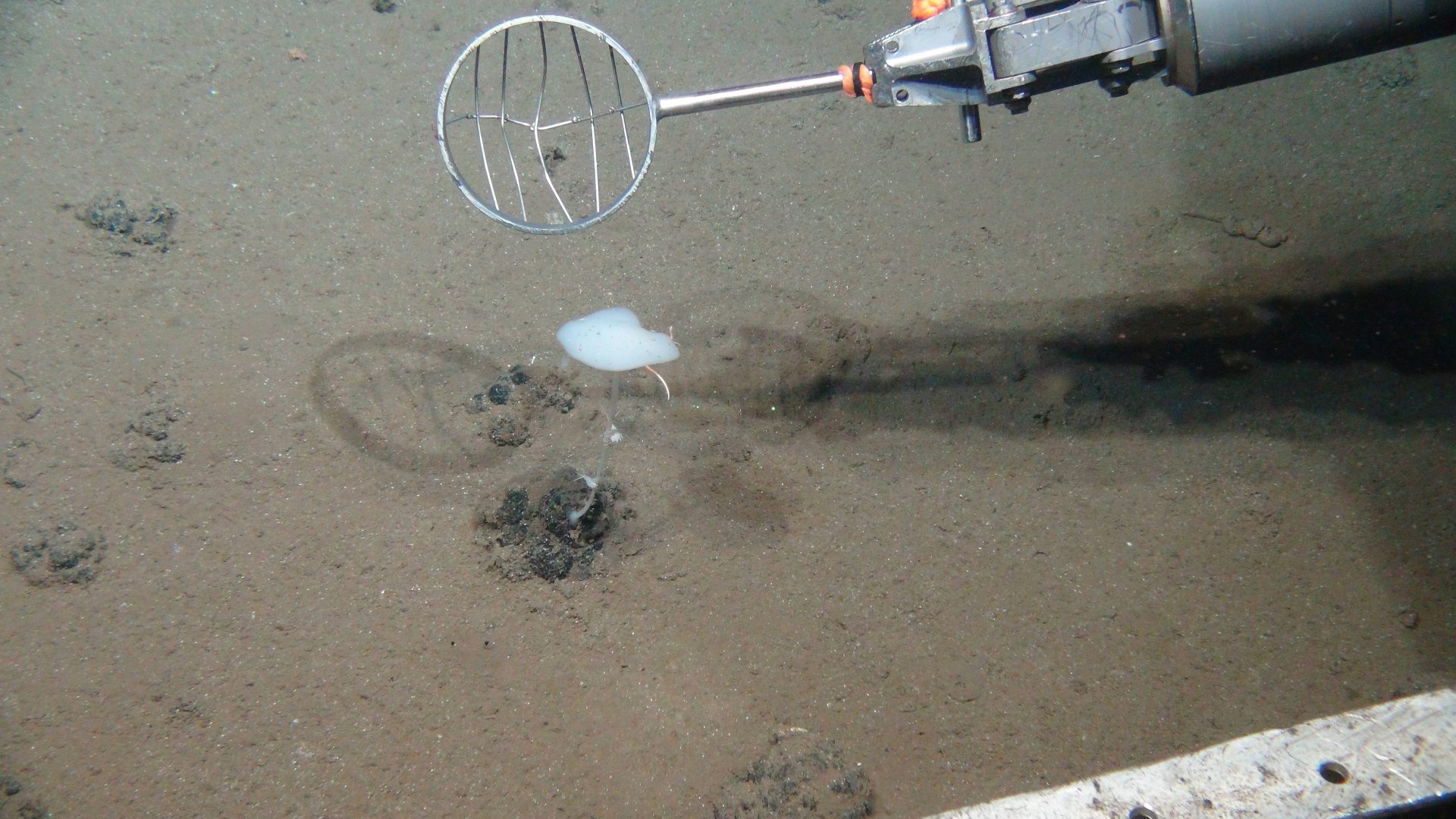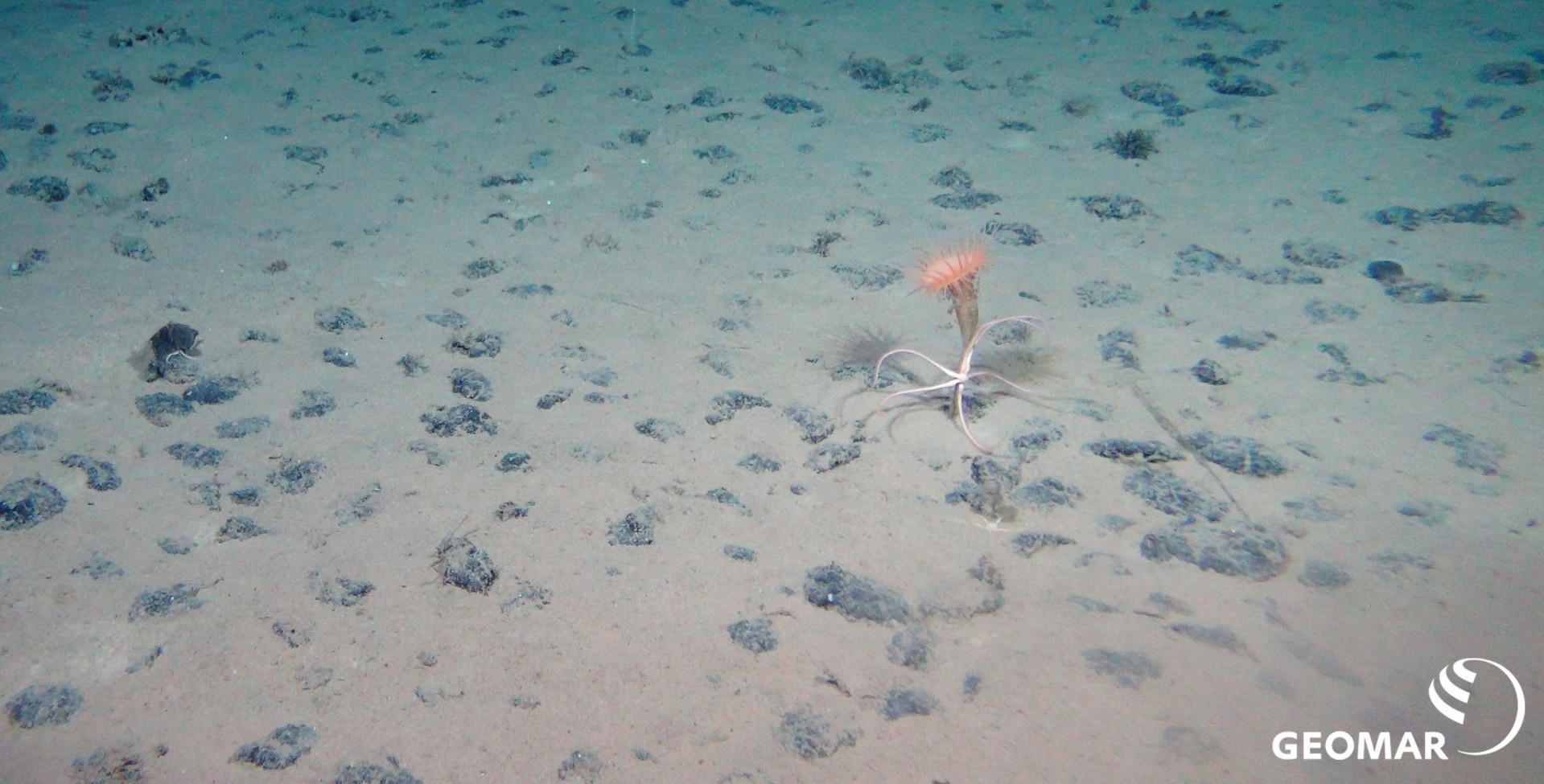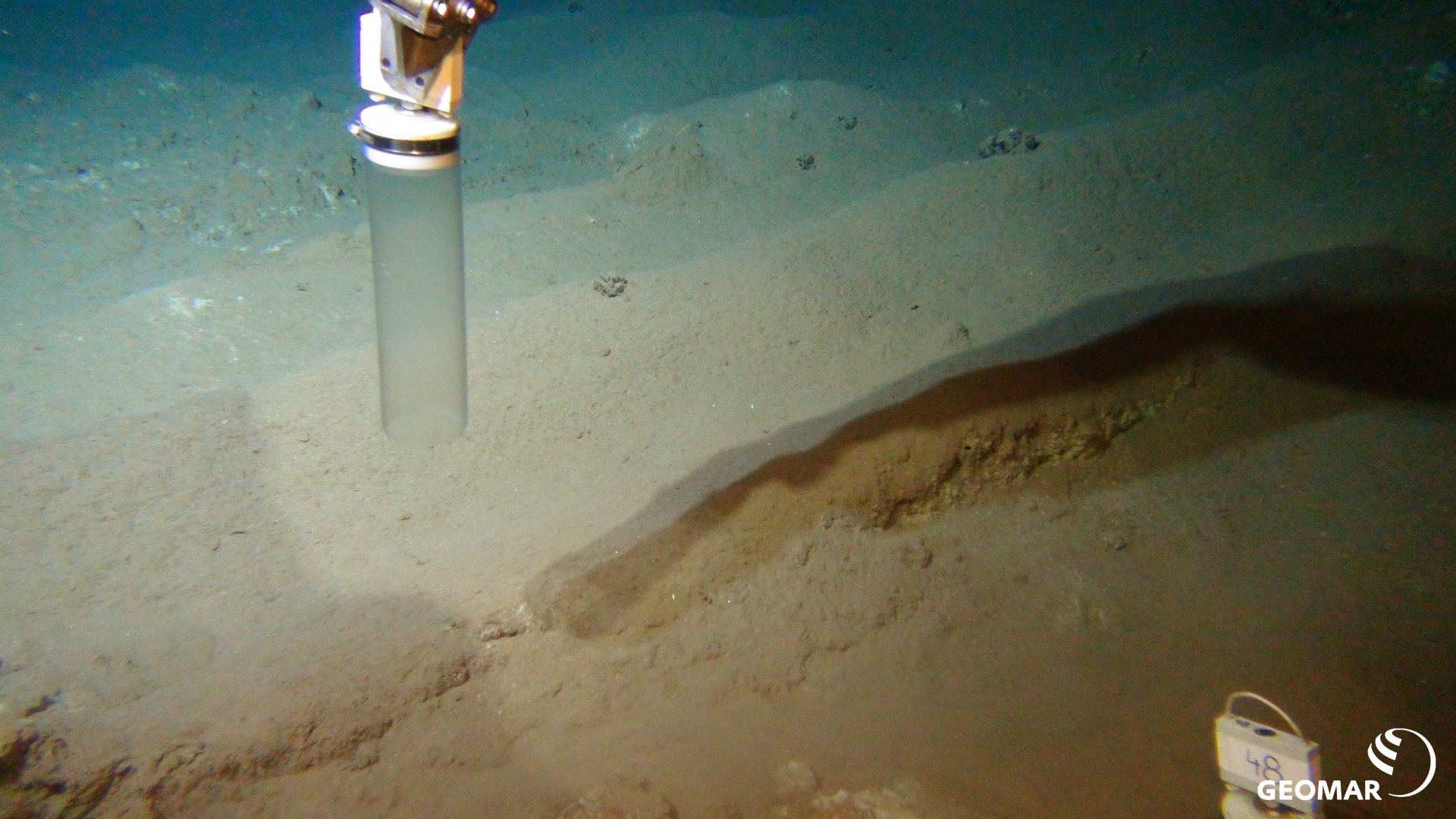- Press Office
- Press releases 2021
- Lodgers on manganese nodules
Lodgers on manganese nodules: Sponges promote a high diversity
Polymetallic nodules and crusts cover many thousands of square kilometres of the world's deep-sea floor. They contain valuable metals and rare earth elements and are therefore of great economic interest. To date, there is no market-ready technology for deep-seabed mining. But it is already clear that interventions in the seabed have a massive and lasting impact on the areas affected. This is also confirmed by a study now published by Tanja Stratmann from the Max Planck Institute for Marine Microbiology in Bremen, Germany, and researchers from the Senckenberg am Meer Institute in Wilhelmshaven, Germany, and the Dutch research institute NIOZ.
In their study, Stratmann and her colleagues used data from a variety of existing surveys as well as deep seafloor imagery from two regions of the Pacific Ocean that are rich in manganese nodules. Using these data, they created a model of interactions in these regions.
“We discovered that stalked sponges are often attached to the polymetallic nodules,” Stratmann explained. The sponges use the hard nodules amid the muddy deep-sea environment as the only available hard substrate. With their stalks, they anchor themselves to the nodule while their main body protrudes into the water to filter tiny particles from it. Moreover, the sponges themselves provide a habitat for other animals, such as small worms, crabs and clams. “Our models predict the following: If the nodules are removed, the sponges will also disappear, and with them the associated fauna,” Stratmann added. “This reduces the number of animal species and links in the food web. Without the nodules, the food web in the deep sea becomes simpler and less divers.”
Stratmann and her colleagues examined two nodule-rich regions in the Pacific Ocean, the Clarion-Clipperton Zone and the Peru Basin. In both regions, a modelled removal of the nodules massively disturbed the ecosystem. This primarily resulted from so-called non-trophic interactions between different animals – those that do not revolve around “eat or be eaten”. These include interactions between the sponges and the animals that live on them, as well as between the sponge inhabitants themselves. In the Clarion-Clipperton Zone in particular, more than half of the deep-sea inhabitants depend on the nodules in one way or another. Removal of the nodules and thus the sponges, as would be the case through deep-sea mining, would trigger a cascade of negative effects on the ecosystem. Rapid recovery is unlikely because the nodules take millions of years to grow to substantial size, and the deep-sea ecosystem regenerates very slowly.
Original publication
Tanja Stratmann, Karline Soetaert, Daniel Kersken, Dick van Oevelen (2021): Polymetallic nodules are essential for food-web integrity of a prospective deep-seabed mining area in Pacific abyssal plains. Scientific Reports (June 10, 2021).
Related articles
Participating institutions
- Max Planck Institute for Marine Microbiology, 28359 Bremen, Germany
- NIOZ Royal Netherlands Institute for Sea Research, 4400 AC Yerseke, The Netherlands
- German Centre for Marine Biodiversity Research (DZMB), Senckenberg am Meer, 26382 Wilhelmshaven, Germany
Please direct your queries to:
Head of Press & Communications
MPI for Marine Microbiology
Celsiusstr. 1
D-28359 Bremen
Germany
|
Room: |
1345 |
|
Phone: |

